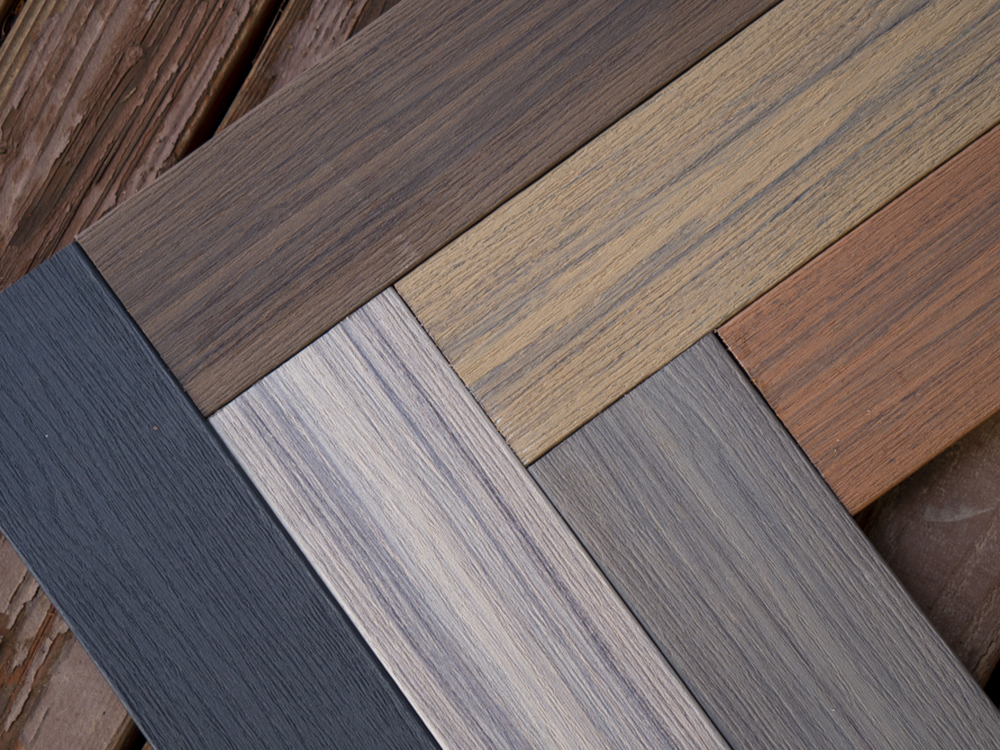When it comes to building a custom deck, choosing the right materials is crucial. There are several options available, including wood, composite, and PVC. Each material has its own set of pros and cons, so it’s important to understand them before making a decision.
Here’s an overview of wood, composite, and PVC custom deck materials for your outdoor space:
Wood Decking
Wood is the most traditional material used for building decks. It’s natural and offers a classic look that many homeowners love. Wood decks can be made from a variety of types of wood, including cedar, redwood, and pressure-treated pine.
Pros:
- Natural look: Wood decks have a warm and natural appearance that many homeowners prefer.
- Cost-effective: Wood is generally more affordable than composite or PVC materials.
- Can be stained or painted: Wood can be easily stained or painted to match your home’s exterior.
Cons:
- Requires maintenance: Wood decks require regular maintenance, including staining and sealing, to prevent rotting and weather damage.
- Susceptible to insects and rot: Wood is susceptible to damage from insects, moisture, and rot, which can shorten its lifespan.
- Can warp or splinter: Wood can warp or splinter over time, which can be dangerous and require repairs.
Composite Decking
Composite decking is made from a combination of wood fibers and recycled plastic. It offers a low-maintenance deck option that’s durable and long-lasting.
Pros:
- Low maintenance: Composite decking requires very little maintenance, aside from occasional cleaning.
- Resistant to insects and rot: Composite decking is resistant to damage from insects, moisture, and rot, which means it can last longer than wood decking.
- Uniform appearance: Composite decking has a uniform appearance, so there are no knots or variations in color.
Cons:
- Higher cost: Composite decking is typically more expensive than wood decking.
- Can be hot to the touch: Composite decking can become hot to the touch in direct sunlight.
- Limited color options: While composite decking is available in a range of colors, the selection is not as extensive as with wood decking.
PVC Decking
PVC decking is made from 100% plastic, which makes it extremely durable and long-lasting. It’s a newer material option that has gained popularity in recent years.
Pros:
- Low maintenance: PVC decking requires very little maintenance, aside from occasional cleaning.
- Resistant to insects and rot: PVC decking is resistant to damage from insects, moisture, and rot, which means it can last longer than wood decking.
- Fade-resistant: PVC decking is resistant to fading, so it maintains its color over time.
Cons:
- Higher cost: PVC decking is typically more expensive than wood decking and some composite decking options.
- Limited color options: PVC decking is available in a range of colors, but the selection is not as extensive as with wood decking.
- Not as environmentally friendly: PVC decking is made from 100% plastic, which is not as environmentally friendly as other options.
Conclusion:
Choosing the right custom deck materials depends on your priorities and budget. Wood decking offers a classic look but requires regular maintenance. Composite decking offers a low-maintenance option that’s durable and long-lasting, but it can be more expensive. PVC decking material is extremely durable and long-lasting but can also be more expensive and not as environmentally friendly. Consider your deck priorities and deck budget before making a decision, and don’t hesitate to consult with a professional custom deck builder to help guide you through the process.

